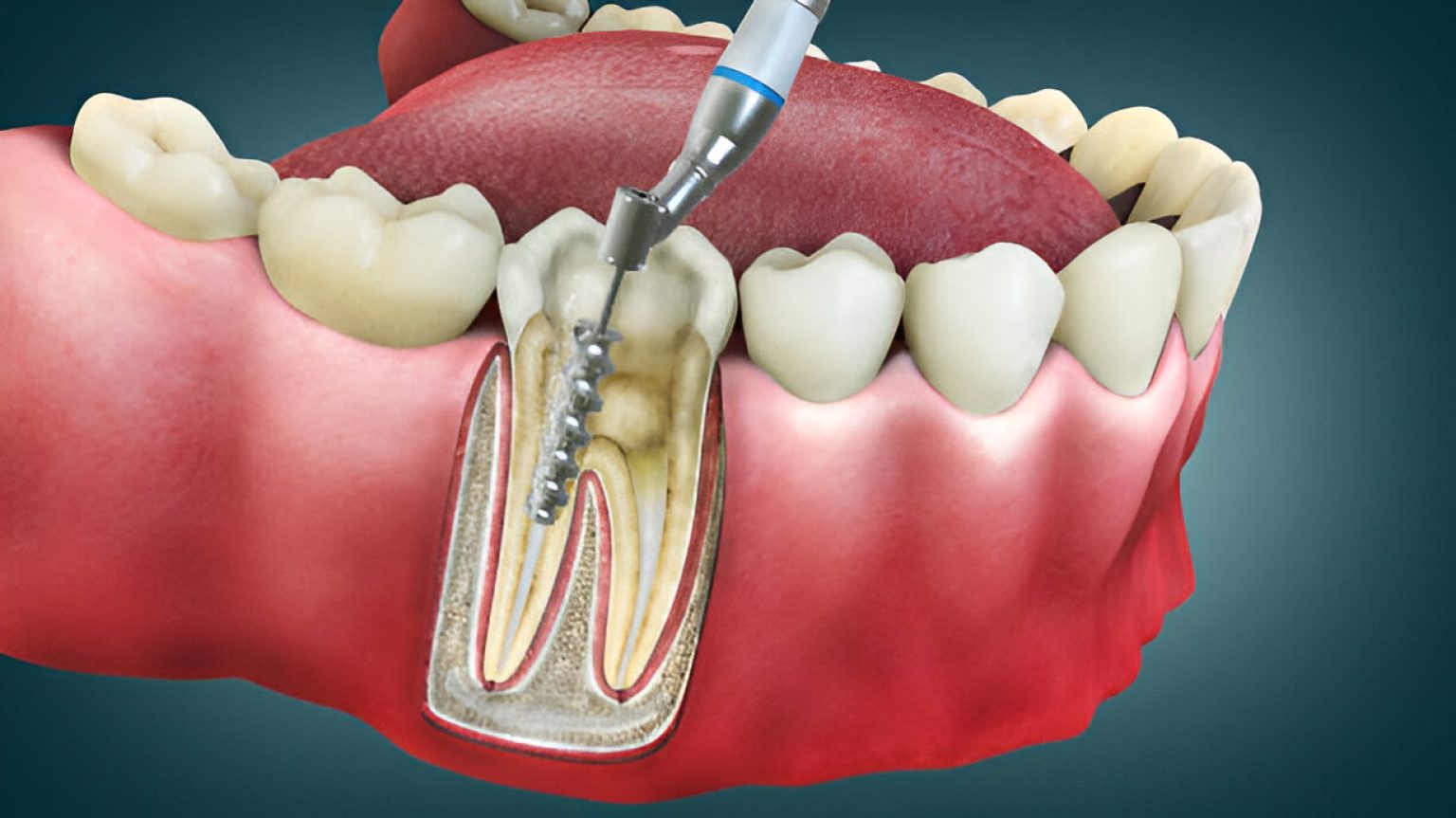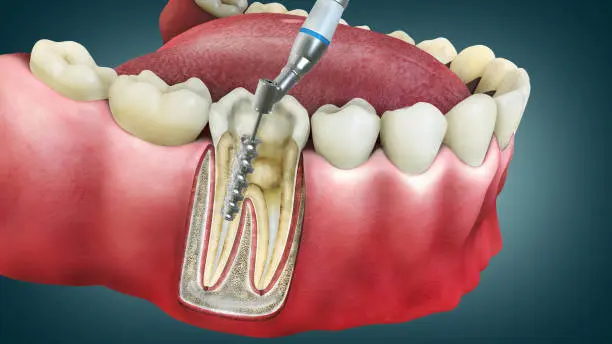Root Canals
Root canal treatment, also known as endodontic therapy, is a dental procedure designed to treat infection or damage within the pulp of a tooth. The pulp, located inside the tooth, contains nerves, blood vessels, and connective tissue. When the pulp becomes infected or inflamed, it can cause severe pain and may lead to abscess formation if left untreated.
Reasons for Pulp Infection or Damage
Bacteria from untreated cavities can penetrate the tooth and infect the pulp.
A cracked or fractured tooth can expose the pulp to bacteria, leading to infection.
Advanced gum disease (periodontitis) can cause the gums to recede, exposing the roots of the teeth and making them more susceptible to infection.
Previous dental procedures such as fillings or crowns that leak or become loose can allow bacteria to enter the pulp chamber.
Gallery
Visual insights to help you understand what to expect from your treatment. For more content, please refer to our Education Hub.

Benefits & Considerations
Everything you need to know to make an informed decision about your treatment.
Benefits
Pain Relief
The primary benefit of a root canal is the relief of pain caused by the infected or inflamed pulp. The procedure removes the diseased tissue, which alleviates pain and discomfort, restoring normal sensation and function to the tooth and surrounding areas.
Prevents Spread of Infection
Root canal therapy stops the infection in its tracks by removing the infected pulp. This prevents the infection from spreading to other teeth, gums, and potentially into the jaw or other areas of the body.
Saves the Natural Tooth
A root canal allows you to keep your natural tooth, avoiding the need for extraction. Saving the natural tooth helps maintain your jawbone’s integrity and prevents the teeth neighboring the affected tooth from shifting, which could lead to bite or jaw problems.
Improves Oral and Overall Health
Treating and eliminating tooth infection via a root canal can have positive effects on your overall health. Poor oral health has been linked to various diseases, including heart disease, diabetes, and arthritis.
Efficient and Cost Effective
While some may think tooth extraction is a simpler solution, it often leads to additional costs and procedures (like dental implants or bridges to fill the space). A root canal is generally a cost-effective treatment because it eliminates the need for more complex dental work later.
High Success Rate
Root canal treatments have a high success rate, and many teeth fixed with a root canal can last a lifetime. While some may worry about the procedure's complexity, advancements in dental technology and anesthesia have made it quite manageable and similar in discomfort to having a filling placed.
Considerations
Possible Complications
While root canal treatment is highly successful, there is a risk of complications such as incomplete removal of infected tissue, instrument breakage, or reinfection.
Tooth Fracture
Following root canal treatment, the tooth may become more brittle and prone to fracture, especially if it is not restored with a crown.
Long-Term Success
The long-term success of root canal treatment depends on factors such as the quality of the initial treatment, proper restoration of the tooth, and ongoing oral hygiene maintenance.
Treatment Procedure
Let's walk through your treatment procedure from start to finish.
Diagnostic Evaluation
Your dentist will perform a thorough examination, including X-rays, to assess the extent of damage and determine if root canal treatment is necessary.
Anaesthesia
Local anesthesia is administered to numb the affected tooth and surrounding tissues, ensuring a pain-free procedure.
Pulp Removal
A small opening is made in the crown of the tooth to access the pulp chamber. The infected or inflamed pulp is carefully removed using specialized instruments.
Cleaning and Shaping
The root canals are cleaned, shaped, and disinfected to remove bacteria and debris.
Filling
The root canals are filled with a biocompatible material called gutta-percha to seal them and prevent reinfection.
Restoration
A temporary or permanent filling is placed in the access opening to seal the tooth temporarily or until a permanent restoration, such as a dental crown, can be placed.
Final Restoration
In some cases, a dental crown may be recommended to restore the strength, function, and appearance of the tooth following root canal treatment
Post-Operative Care
Simple steps to protect your smile and ensure optimal results in the days following your procedure.
Follow Post-Treatment Instructions
Follow any post-treatment instructions provided by your dentist, including recommendations for pain management and oral hygiene.
Avoid Chewing
Avoid chewing on the treated tooth until it is fully restored with a permanent filling or crown to prevent fracture or further damage.
Maintain Oral Hygiene
Continue to brush and floss regularly to keep the treated tooth and surrounding tissues clean and healthy.
Attend Follow-Up Appointments
Attend any scheduled follow-up appointments with your dentist to monitor the healing process and ensure the success of the treatment.

Root canal treatment is a common and effective procedure for saving a tooth that is infected or damaged within the pulp. By removing the infected tissue, cleaning the root canals, and sealing the tooth, root canal treatment can alleviate pain, preserve the natural tooth structure, and restore oral health and function. If you experience symptoms of a tooth infection or damage, consult with your dentist for evaluation and treatment recommendations.
Root canal treatment is a reliable and effective solution for saving severely damaged or infected teeth. By addressing the underlying issue and preserving your natural tooth, it helps restore your dental health and allows you to continue enjoying a confident smile.